|
WC vs. History: Forty-Five Score and Eleven Lexingtons
Lexington is one of the proudest names in American history, owing to the 1775 victories at Lexington and Concord which began the American Revolution. The name quickly became a naval tradition applied to a long line of warships that run the course of American history--a group that includes two of the most important aircraft carriers ever put to sea.
Wing Commander IV's TCS Lexington (CV-44) had a few more shades of gray. While you seem to start the game on a powerful replacement for the Victory, you quickly learn it is being used as a home base for Admiral Tolwyn's sinister GE pilots... and you must turn your guns on her. Today we will look at how the ship we visited in 2673 earned her name and how she fits into a long history of other Lexingtons, both real and future.
Once again, it is the Wing Commander IV novelization which adds the fascinating detail connecting our Lexington to a grand history (and again, it is during Blair and Eisen's reunion):
[Blair] looked around the flight deck, noting the fresh paint and the new equipment. "The Lexington sure puts the old Victory to shame."
"Yeah," Eisen said, "you should have seen her after the Battle of Earth. The defenders kicked her out of lunar dry dock as a decoy. The Kilrathi savaged her, internal explosions gutted her, and the crew got wiped out. Normally, the hulk would have been left to drift or given an honorable end with scuttling charges, but the Fleet decided that a dead hull was better than no hull at all." He grinned. "It turned out that it would have been cheaper just to scrap what was left and start over."
He looked up at the overhead fondly, "She's the Lady Lex, the Grey Ghost, resurrected from the dead, the eleventh ship to bear the honorable name. Treat her right and she'll always bring you home."
First of all: we must clear up some common confusion about Lexingtons in Wing Commander. In chronological order, there is a TCS Lexington which is destroyed in the Battle of Earth in Fleet Action, a newly launched Lexington sent off on a secret mission in Armada and then the initial home carrier in Wing Commander IV (CV-44). The mathematically inclined might count that as three different Lexingtons--but it's important to note that the Wing Commander IV novelization established that that game's carrier was actually the same ship destroyed in Fleet Action, repaired and recommissioned. This means that (per the quote above) the Wing Commander IV Lexington is the eleventh ship to bear the name and the Armada carrier is the twelfth. So, then, what is the story behind Lexingtons one through ten?
On March 13, 1776 Wild Duck was purchased by the Maryland Marine Committee and renamed Lexington to honor the first battle of the war. The first USS Lexington (Wikipedia) had a short but eventful career. She captured three British auxiliary ships before herself being taken by the British off the coast of Morlaix, France on September 19, 1777.
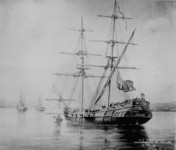
The second USS Lexington (Wikipedia) was a purpose built sloop-of-war for the United States Navy commissioned on June 11, 1826. One of her first duties was to return the body of Commodore Oliver Hazard Perry, hero of the Battle of Lake Erie, who had died while on a trip to Venezuela. For the rest of her career the Lexington was laid up once, being recommissioned in 1831 and serving until 1855. She served as a transport and blockade ship during the Mexican-American War on Mexico's northwestern coast and later as part of Commodore Mathew Perry's famous 1853 expedition to Japan. She was decommissioned in 1855 and sold in 1860.
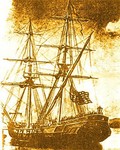
The third USS Lexington (Wikipedia) was a timber steam powered gunboat that served throughout the American Civil War. Originally built as a side-wheel steamer it was purchased by the War Department and converted into a timber clad gunboat in 1861. She served at the Battles of Belmont, Fort Henry, Shiloh, Saint Charles, and Milliken's Bend as well as several other operations. She was decommissioned in June 1865 and sold in August of that year.
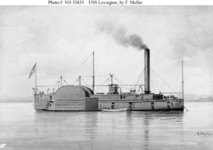 The fourth American vessel to bear the name Lexington (Wikipedia) was a short-lived patrol boat in service in 1917-1918. Actually named USS Lexington II (SP-705), it was a private motorboat that had been built with the name and was put into service bearing it. She conducted patrols of the Delaware River and Chesapeake Bay.
The fourth American vessel to bear the name Lexington (Wikipedia) was a short-lived patrol boat in service in 1917-1918. Actually named USS Lexington II (SP-705), it was a private motorboat that had been built with the name and was put into service bearing it. She conducted patrols of the Delaware River and Chesapeake Bay.
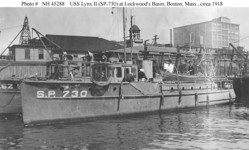 Not the Lexington II, but it has a understanding with those that do.
Not the Lexington II, but it has a understanding with those that do.
The fifth Lexington (Wikipedia) started life in 1916 on the drawing boards and the building slip as a battle cruiser; however the 1921 Washington Naval Conference would see her conversion into an aircraft carrier. The ship had been laid down in January of 1921 but the conversion orders would follow within the year. The "Gray Lady" or "Lady Lex" as she was called by American sailors was one of two ships in the Lexington class. The other, USS Saratoga (CV-3), more affectionately called "Sister Sara" joined the Fleet with the Lady Lex in 1927. The pair of carriers would prove pivotal in interwar American naval exercises in showcasing the power of naval aviation. Most famously during Fleet Problem IX in January 1929 when the Saratoga made the first high-speed carrier raid, using the Panama Canal as a target, while operating independently of the main battle fleet.
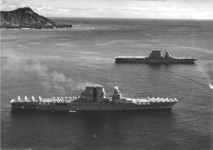
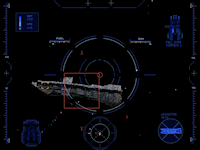 Action Stations' Panama System War Games were based on Fleet Problem IX... but that's a story for a future update!
Action Stations' Panama System War Games were based on Fleet Problem IX... but that's a story for a future update!
At the start of World War II in the Pacific, the Lexington was returning from Midway after having delivered Marine aircraft to the American outpost. She was dispatched to take part in the failed attempt to relieve Wake Island in late-December 1941, but was recalled. In February 1942, the Lexington was ordered to raid Japanese forces that had seized Rabaul, New Britain. The carrier was sighted prior to the raid and was attacked by Japanese air assets. During this attack, Lieutenant Edward "Butch" O'Hare downed five enemy bombers and would receive the Medal of Honor for his actions in protecting the Lexington.
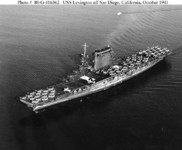
In early May 1942 the USS Lexington along with the USS Yorktown (CV-5) took part in the Battle of the Coral Sea. This was the first naval battle in history where the opposing fleets never directly saw each other. Her air wing would take part in the destruction of the light carrier Shoho on May 7th. The Lexington's own Lt. Commander Robert E. Dixon, commander of the carrier's SBD Dauntless dive bomber squadron, gave the famous radio call "Dixon to carrier, Scratch One Flattop! Signed Bob!"
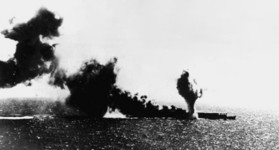
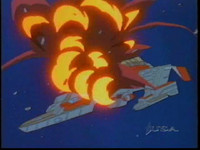 In Fleet Action, Hunter notes that 'scratch one flattop' is now the fleet's traditional announcement. It continues: "He found the word flattop to be rather interesting, it came from old English when carriers were ships of the seas, but in no way could it ever describe a modem carrier with its bristling array of defenses and landing bays covered over with heavy durasteel armor."
In Fleet Action, Hunter notes that 'scratch one flattop' is now the fleet's traditional announcement. It continues: "He found the word flattop to be rather interesting, it came from old English when carriers were ships of the seas, but in no way could it ever describe a modem carrier with its bristling array of defenses and landing bays covered over with heavy durasteel armor."
On May 8th the USS Lexington was hit by two torpedoes and two bombs while her aircraft attacked the Japanese carriers Shokaku and Zuikaku. While the damage to the Lexington itself was not critical, the situation was made fatal by a secondary gasoline explosion hours after the attack. After one of the most successful abandon ship operations in history, the USS Lexington sank at 7:56 pm on May 8, 1942. She had earned two battle stars for her service in World War II. Many sailors had served on the Lady Lex since her commissioning in 1927 and were witness to her loss in 1942. Not an eye was dry amongst these "plank owners", nor among the rest of the ship's crew, as they watched the ship take her final plunge.
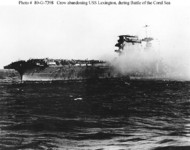
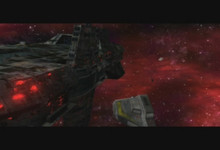 CV-44 met the same fate as her namesake at the end of Fleet Action--succumbing to internal explosions after fighting one of the great battles of her time.
CV-44 met the same fate as her namesake at the end of Fleet Action--succumbing to internal explosions after fighting one of the great battles of her time.
Five days after the Navy publically acknowledged the loss of CV-2 in June 1942, workers at the Fore River Shipyard in Quincy proposed changing the name of one of the Essex class carriers then being built at the yard from Cabot to Lexington. Secretary of the Navy Knox agreed and on September 23, 1942 the sixth American ship to bear the name Lexington (Wikipedia) was launched. She was commissioned on February 17, 1943. Like her carrier namesake, USS Lexington (CV-16) would provide an important platform for the further development of naval aviation. Upon joining the Pacific Fleet in the summer of 1943, CV-16 took part in shakedown raids on Tarawa in late September and then Wake Island in October. These raids were used by the Navy to break in the new carriers as well as test some doctrinal theories. She then took part in the invasion of the Gilbert Islands (Tarawa and Makin) in November 1943. Following that operation, the fast carriers were ordered to raid Kwajalein in the Marshall Islands. The raid was successful, although only partial so as a group of G4M "Betty" bombers escaped destruction before the carriers retired. These planes undertook a nighttime air attack on the carrier force. Admiral "Baldy" Pownall ordered that the ships not open fire less they give their positions away. At 11:32 pm Lexington was struck by a single torpedo that knocked out her steering gear. Pownall's mistake was never made again and he was replaced not long after the raid. The Lexington reached Bremerton, Washington at the end of the month and spent until February 1944 under repair.
The Lexington returned to action with Task Force 58 in March 1944. She participated in a variety of actions before arriving off the Mariana Islands in June of 1944. It was only a week after D-Day in Europe that the mighty 5th and 7th Fleets of the US Navy invaded the island of Saipan. This action precipitated the Battle of the Philippine Sea known otherwise as the "Great Marianas Turkey Shoot." On the first day of this battle the nine carriers of the Japanese Mobile Fleet launched more than 350 aircraft at the fifteen carriers of Task Force 58 and their complement of 956 aircraft, including over 450 F6F Hellcat fighters. In the four major raids that morning, American fighter pilots destroyed over 300 Japanese planes. One of the most famous images of this battle is of Lt. Alex Vraciu standing besides his F6F Hellcat onboard the USS Lexington holding up six fingers. Each one represents a Japanese plane he'd shot down. On the flag bridge, Admiral Marc Mitscher, who was commander of Task Force 58 and an aviator himself, made his way down to the flight deck to ask for a picture with Lt. Vraciu, not for publication but for his own private collection.
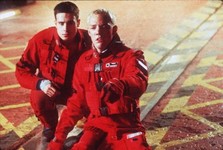
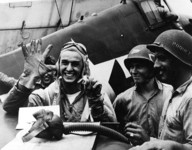 They don't make them like they used to: Lt. Todd Marshall (left) says it takes "big balls... to maintain four enemy fighters". Lexington pilot Lt. Alex Vraciu (right) shot down six in eight minutes during the 1944 Great Marianas Turkey Shoot.
They don't make them like they used to: Lt. Todd Marshall (left) says it takes "big balls... to maintain four enemy fighters". Lexington pilot Lt. Alex Vraciu (right) shot down six in eight minutes during the 1944 Great Marianas Turkey Shoot.
Following the Turkey Shoot the Lexington continued to operate with the fast carriers and raid Japanese-held islands. In early October she took part in the highly successful raids on Okinawa and Formosa that destroyed over 500 enemy aircraft. These raids moved the timetable up for the invasion of the Philippines. The Lexington played a key role in the battle that would come.
At the end of October 1944, the US 3rd and 7th Fleets assaulted the Philippine island of Leyte. This action caused the Japanese to initiate their "SHO-1" or Victory Plan 1 for the defense of the Philippines. This sent the entire Japanese Imperial Navy into high gear across the Western Pacific. The Lexington's planes would take part in the raids on Admiral Kurita's Center Force, inflicting torpedo hits on the super battleship Musashi and four cruisers on October 24. The following day her planes would singlehandedly sink the carrier Zuikaku, last of the carriers to raid Pearl Harbor and with the help of pilots from the USS Essex sink the carrier Chitose and later the light carrier Zuhio.
On November 5, 1944 the USS Lexington was introduced to the deadly new Japanese tactic of suicide planes or Kamikazes. A kamikaze crashed near the island of the carrier and caused large fires, however they were controlled quickly and the ship was able to resume flight ops within 20 minutes. Yet again she had eluded the Japanese as she arrived at Ulithi atoll for repairs. For the reminder of the war the Lexington took part in a variety of raids against Japanese-held islands as well as the Japanese home islands. She had actually launched a strike towards the Tokyo area on August 15, 1945 when en route to the target the planes were ordered to jettison their loads and return to base. The war was over.
The Lexington participated in Operation Magic Carpet after the war, returning veterans and POWs from the Far East to San Francisco. She was decommissioned in Bremerton, Washington in 1947. In 1953 she was brought back into service as an attack carrier (CVA) and began conversion for an angled flight deck. She would serve a variety of posts before being turned into a training carrier in 1969. She would serve in this role until the late-1980s when she was decommissioned. The ship was then donated as a museum in June 1992 and is now located in Corpus Christi, Texas. The USS Lexington (CV-16) was the last Essex class carrier in commission and the last wooden-decked carrier operated by the US Navy. During its career the Lexington received a Presidential Unit Citation for actions against the Japanese and 11 battle stars for major engagements during World War II. Since her decommissioning no other American vessel has born the proud name Lexington.
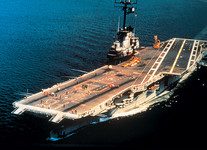 What about the other four Lexingtons? Presumably they will be built sometime between today and 2668!
What about the other four Lexingtons? Presumably they will be built sometime between today and 2668!
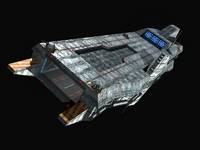
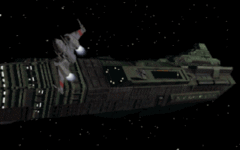 If you're counting, that's 897 years of ships named Lexington
If you're counting, that's 897 years of ships named Lexington
The nickname given to CV-44 in the novelization, "Grey Ghost", is also a nod to Lexington history. To characters in the Wing Commander world it seems to come from the fact that she rose from the ashes after the 2668 Battle of Earth... but it's also paying tribute to Essex-class USS Lexington's nicknake, "The Blue Ghost". The name stems from the fact that the carrier was the only one painted dark blue to confuse the enemy. "Tokyo Rose", the famous propaganda broadcaster, would report over and over that the Lexington had been sunk, yet neither she, nor any of her sister ships of the Essex class, were ever lost to enemy action. She also shares the gray with CV-2's nickname, "Gray Lady"--and all three ships are called "Lady Lex".
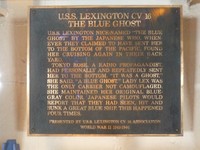
Origin's decision to name the Confederation carrier in Wing Commander IV Lexington, though, was initially based more on geography than any desire to honor American tradition. At the start of the Wing Commander IV project, the entire development team traveled to Corpus Cristi, Texas to visit the USS Lexington museum ship to learn how to improve the next game. The game's more elaborate art design (including, especially, the high detail textures) came out of that effort. If you would like to visit the real Lexington--and walk in the footsteps of both American heroes and Wing Commander developers--you can learn more here. It is interesting to compare rooms on display on the museum ship to those seen in her outer space descendant:
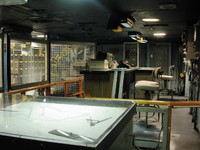
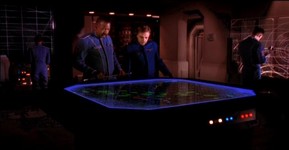
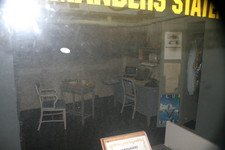
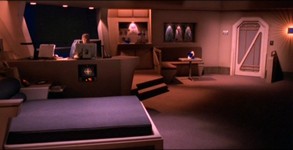
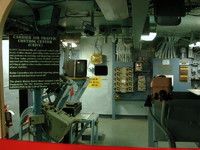
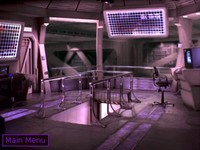
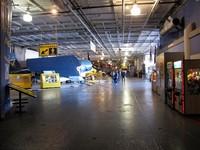
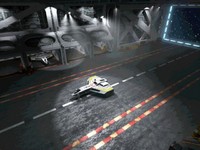
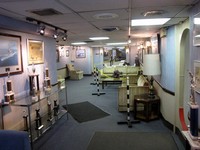
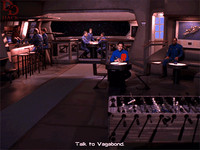
Lastly: eagle-eyed wingnuts may have seen that the TCS Lexington's officer's lounge includes a photo presentation of a seagoing aircraft carrier. Look closely, though--it's a modern nuclear powered carrier rather than either of the TCS Lexingtons. The ship in the picture is actually the USS Enterprise; one guess as to why they couldn't use that name for Wing Commander IV!
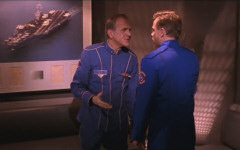 Captain Paulsen's crimes include genocide and standing in front of the wrong franchise's aircraft carrier namesake.
Captain Paulsen's crimes include genocide and standing in front of the wrong franchise's aircraft carrier namesake.
This update was a joint effort. Without hard work from Dundradal and Bob McDob it would have been impossible.
|

